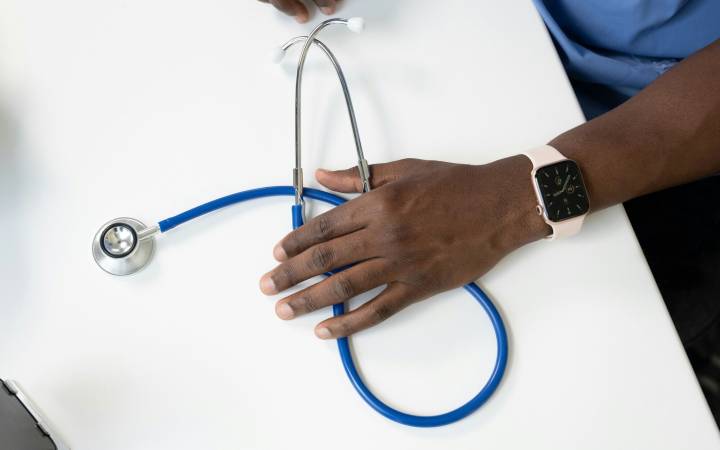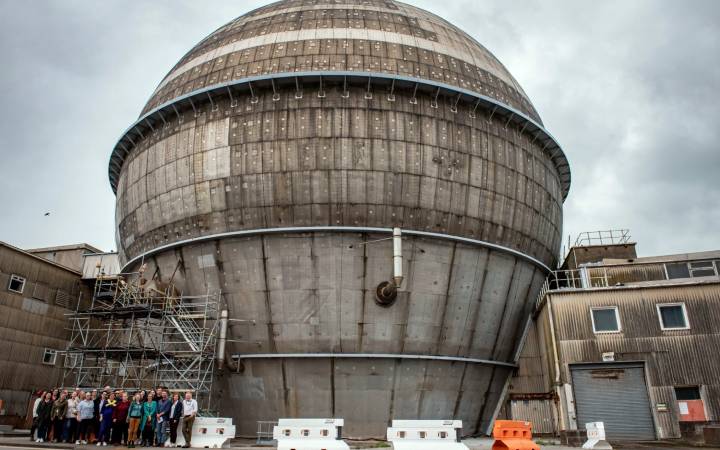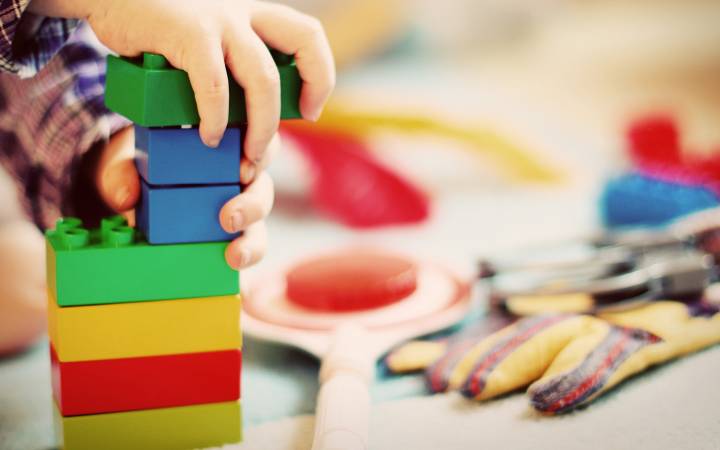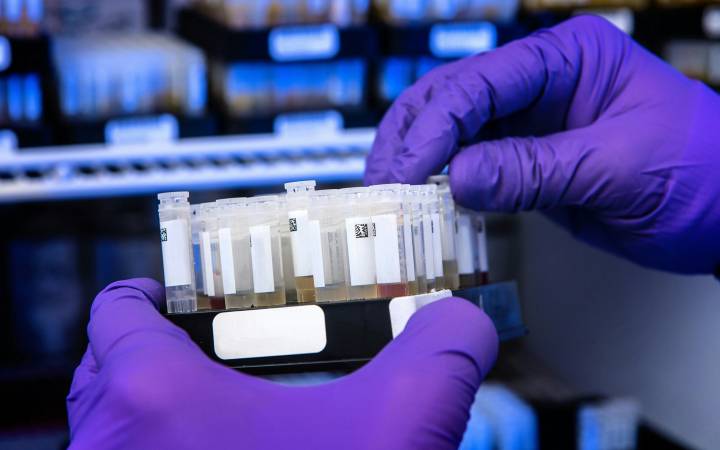Kingston researchers look for clues to visual-spatial development at the Science Museum
Posted Monday 19 May 2014
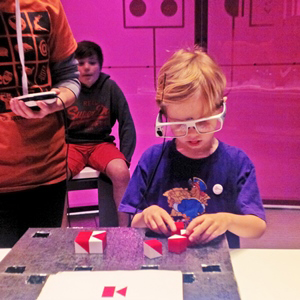 Every Saturday, Sunday and Monday, from 5 April until 16 June, three researchers from Kingston University's department of psychology will be carrying out research at the Science Museum in London, asking visitors to wear specially adapted glasses that can track and record eye movements.
Every Saturday, Sunday and Monday, from 5 April until 16 June, three researchers from Kingston University's department of psychology will be carrying out research at the Science Museum in London, asking visitors to wear specially adapted glasses that can track and record eye movements.
The research is part of Live Science, an ongoing project where scientists go into the Science Museum to carry out research using museum visitors as volunteers.
With the help of their students, Dr Jo Van Herwegen, Dr Elisa Back and Dr Sabira Mannan ask visitors to copy patterns illustrated in a book using 3D plastic red and white cubes, while their eye movements are tracked using a Tobii Glasses Eye Tracker. On their first day they had more than 100 visitors and collected data from 39 people. Anyone is welcome to take part and the researchers are particularly keen to encourage children aged six to eight.
Back at the University, the researchers analyse the video using a millisecond-by-millisecond analysis software programme. They can, for example, determine whether the person completing the test was looking at the pattern they were asked to copy, or their own cubes, or were distracted and looking at something completely different. The researchers hope to learn how our visuo-spatial abilities develop as we grow older, and how to improve visuo-spatial performance.
The video below shows Dr Van Herwegen using Tobii eye tracking technology in an unrelated study to track the eye movements of babies in her lab:
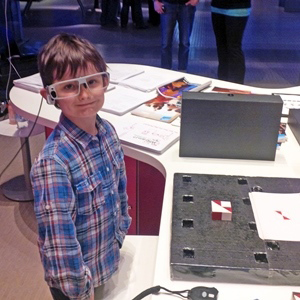 Visuo-spatial abilities help people understand the world around them and include navigation, mental imagery and rotation skills, distance and depth perception. We use them a lot in our daily lives – such as when judging the time needed to cross a busy junction or before a traffic light turns red; or to avoid bumping into objects.
Visuo-spatial abilities help people understand the world around them and include navigation, mental imagery and rotation skills, distance and depth perception. We use them a lot in our daily lives – such as when judging the time needed to cross a busy junction or before a traffic light turns red; or to avoid bumping into objects.
Some people have difficulties with their visuo-spatial abilities, and this can have a big impact on their lives, especially their levels of independency. Developing a better understanding of why some people have better visuo-spatial abilities than others could lead to better interventions and training programmes.
- Find out more about research at Kingston University.
Contact us
- For non-student research enquiries, email the Research Support Office
- Research Support Office contacts
- Graduate Research School contacts
- Business and Enterprise Centre contacts
- How to get to Kingston University
